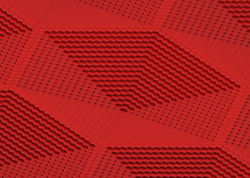Analysis of 3D nanostructures
Understanding the properties of nanomaterials requires equipment whose resolution, sensitivity, accuracy and even type of information provided exceeds that available in many cases. This holds true for just about any field, from consumer electronics to biomedicine and energy and beyond. Scanning force microscopy (SFM) provides detailed structural information with outstanding lateral resolution down to the atomic scale, but lacks the ability to provide chemical information. Chemical analysis techniques that use electron, photon or ion beams, such as time-of-flight secondary ion mass spectrometry (ToF-SIMS), are hampered by poor resolution and sensitivity for the analysis of nanostructures. Scientists combined the techniques in a single instrument with EU funding of the project 'Combined SIMS-SFM instrument for the 3-dimensional chemical analysis of nanostructures' (3D NANOCHEMISCOPE). For the first time ever, scientists can simultaneously have complementary information regarding nano-scale surface structure and chemistry. The 3D NANOCHEMISCOPE system sports a high-precision five-axis stage (xyzrt positioning including Cartesian coordinates, rotation and translation) capable of positioning the sample and holding it in place rapidly and accurately. Layer-by-layer removal of nano-scale material in a controlled way is achieved by sputtering techniques. Modified high-resolution SFM measures the surface topography at various depths, while ToF-SIMS with lateral resolution down to 16 nanometres (nm) and improved surface sensitivity provides chemical information. In addition, depth profiling is possible without radiation damage and resulting loss of molecular information, as is common with other sputtering techniques. Software enables the calculation of a 3D display for all chemical species present. The novel 3D NANOCHEMISCOPE enables a major breakthrough in organic depth profiling with unprecedented versatility for materials such as organic thin films and organic nanostructures. These materials are critically important in widespread applications, including sensors, biotechnology and optoelectronics. The project is thus expected to have important impact on the competitiveness of the EU economy in a variety of market sectors, and to position the EU as a leader in nano-scale measurement and characterisation.







